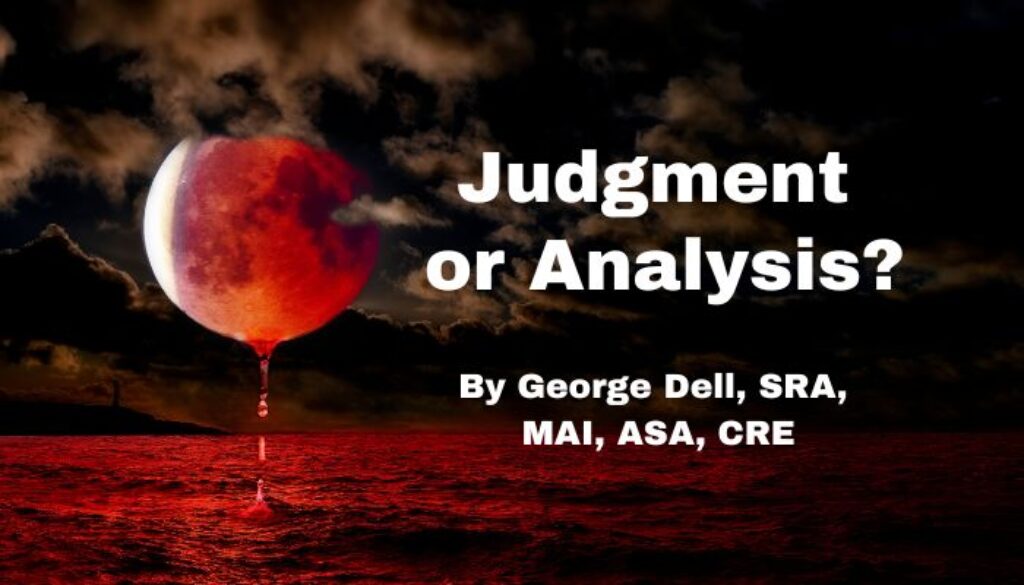Appraiser judgment is required. Analysis is reduction and logic.
Analysis comprises reasoning and reducing the problem into well-mannered parts. Logic can be mathematical/absolute, or it may involve uncertainty/probabilistic reality. Reduction is the act of separating a larger problem into manageable parts.
Judgment, in (traditional-legacy) appraisal, is emphasized in picking comps (data selection). Appraisers are admonished by education and by law to provide good judgment. Good judgment is required not only for picking comps, but also in “making adjustments.”
Some may see this as a battle between the art of appraisal versus the science of modern valuation. There is no such battle.
There is always art in science. There is always science in art.
Science is a systematic search for a solution. The art of science requires a prior body of knowledge, current investigation of data, and a useful expression of the results (which may also be an “opinion”).
Art is in conflict with science. Yet they work together.
Art involves a flow of judgment. And that judgment is involved with each stroke, each color decision, and each nuance. Each part is a part of the whole. Each whole comprises each part.
In science (like data science), each judgment is involved with each part. Each part is a model. Each model requires decisions. Each nuance requires decision and explanation.
Evidence Based Valuation (EBV)© is data science and the art of appraisal combined for a superior result.
What parts are there?
For the historical appraisal process, the two main parts are: 1) pick comps; 2) make adjustments. The original appraisal process was created some 80 years ago, with no real re-engineering since then.
For modern (data analysis) valuation, the art, the judgment is more important! Judgment is involved at more points, in greater detail, and with better clarity — beyond “trust me and my long experience.”
Modern valuation exploits modern technology: plentiful, instant data; unlimited storage; simplified statistics. All using applied econometric theory with clarified models.
For modern EBV, we clarify the relation of expert judgment to the process. The analyst:
- Identifies and downloads all the relevant data (as USPAP requires);
- Optimizes the quantity of relevant data, with bias/variance tradeoff;
- Reduces overall data set to the Competitive Market Segment (CMS)©;
- Employs the three fundamental and visualizable predictive algorithms;
- Sends an enhanced data stream to static and dynamic user dashboards.
Data science explicitly recognizes the need for the “field-related” expert. Either appraisers or asset analysts will be required in the future. They will be required to prevent “black swan” errors of AI or “automated” risk calculators. They will be required for the ultimate public trust.
We must somehow overcome the “five frictions” of inertia: practices, standards, education, regulation, and client expectation. Progress within one friction is thwarted by friction in the others. These prevent modernized real estate valuation, risk/reliability measures, forecasting — and counter-cyclicality policies.
Only directive from an overarching authority can help. Is this the FHFA?
Valuation is a science. A science that relies on good art, methodical judgment, and real independence.
